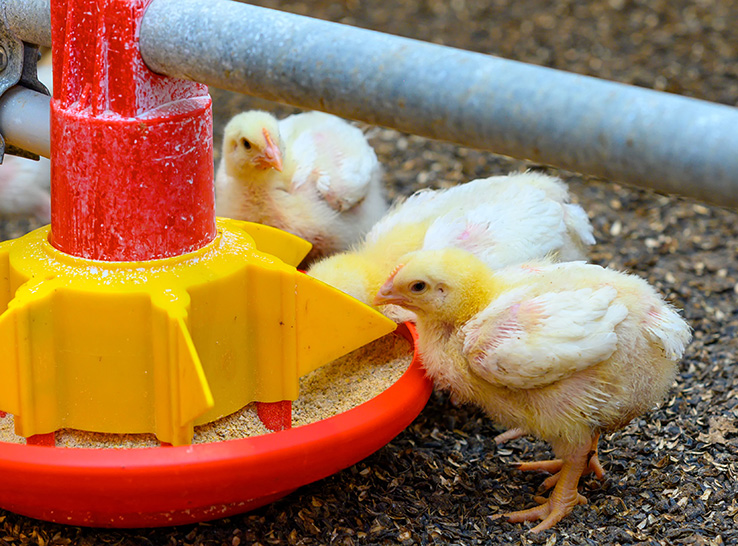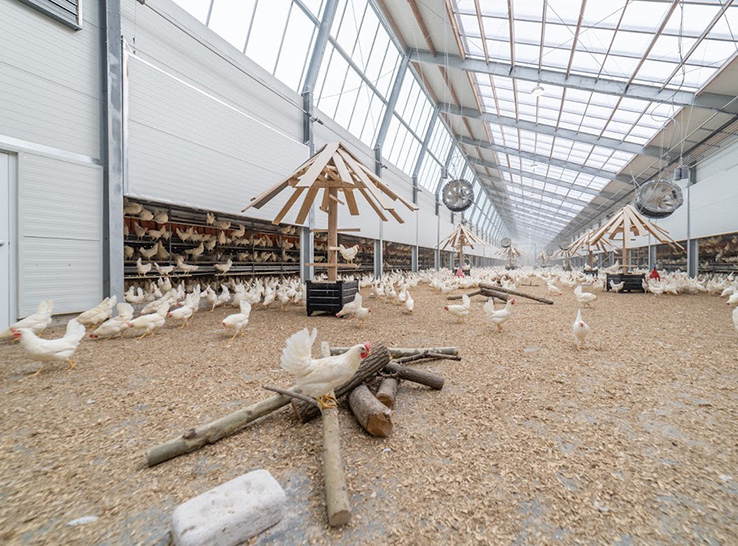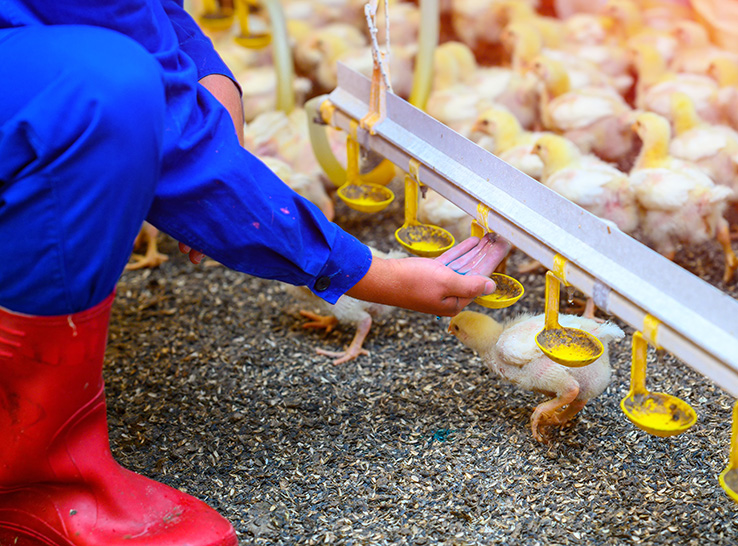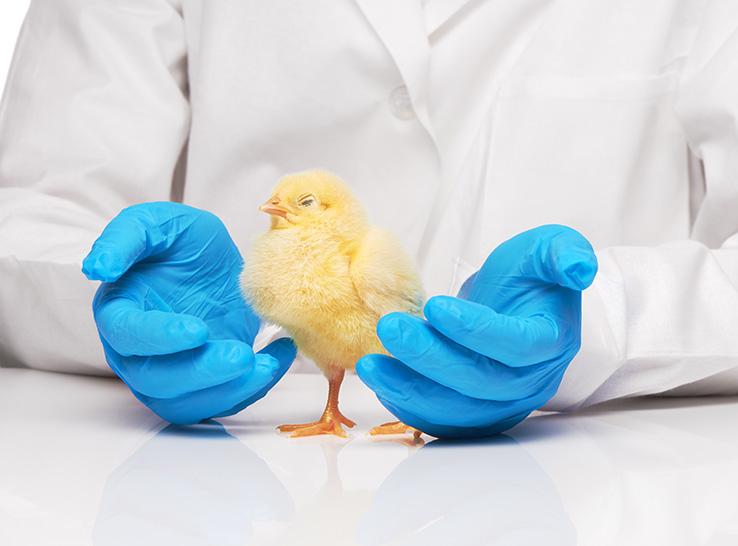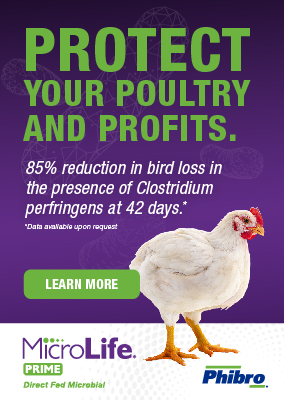By Leah Dorman, DVM
Director, Communications & Consumer Engagement
Phibro Animal Health Corporation
Standard Grade A. Pasture-raised. Cage-free. Free-range. Organic. Omega-3 enhanced. Vegetarian-fed.
Stop by the egg section at your local grocer and there’s a mind-boggling variety to choose from. Most are distinguished by where and how hens are raised and allow today’s discerning consumers to purchase eggs based on their preferences and values.
Now, there’s a new egg on the block in the US — the carbon-neutral egg from Kipster Farm.
It’s the result of a different approach to egg farming that started in 2017, when Kipster, a Dutch egg producer, introduced the world’s first carbon-neutral egg to the Netherlands. In 2022, Kipster opened its first US farm near North Manchester, Indiana, and I recently had a chance to check out this egg’s new digs.
It was futuristic and fascinating — and one more way to meet consumer demand for environmentally friendly proteins, including meat, milk and eggs.
Indoor ‘playground’
In the long, modern barn, hens have access to a large indoor “playground” with a clear roof that gives them natural sunlight. The space includes amenities like wooden tree-like structures, wood piles, rocks and straw bales for roosting and preening. Caretakers throw feed on the ground to attract hens to the area and provide hay nets and straw bales to give them something to peck at besides each other (hen-pecking is real — an instinctive behavior where hens peck each other to establish a “pecking order” or hierarchy). Fans and water misters keep them comfortable.
Alongside the open space are rooms, separated by large garage-style doors that allow access to fenced outdoor areas, which have tiered structures for nesting and laying eggs (removed via conveyor belt). The barn of 24,000 hens is divided into four sections of 6,000 hens. In the section I toured, only four hens had ventured into the outdoor space, likely due to the hot weather. They were smart and stayed inside to take advantage of the 24/7 climate control. And this is true of many different types of barns I’ve been in; most of the time, birds huddle together and stay indoors.
So, what makes the eggs laid by Kipster hens carbon-neutral?
First, the company tries to reduce its carbon footprint as much as possible in terms of feed production and processing, farm operations, raising of the birds and packaging. Specifically:
- Kipster uses upcycled feed. Its hens in the Indiana facility are provided feed formulated by nutritionists and other experts made of 87% by-products and co-products (like misshapen bread, broken pasta and oat hulls) from bakers and other food producers. According to the company, upcycled feed reduces greenhouse gas emissions considerably (50% lower than conventional feed). By using upcycled feed, Kipster aims to use less land to grow crops for their birds.
Fun Fact: White eggs have a lower carbon footprint than brown eggs because white hens — like those raised by Kipster — eat less feed.
- The barn is solar powered (the farm doesn’t use any fossil fuels).
- Like most egg farms, Kipster dries chicken litter (a mixture of manure, spilled feed, feathers and bedding/flooring material) and turns it into fertilizer that is used by farmers to grow crops.
Any remaining emissions are offset through the purchase of carbon credits. Kipster Farm’s CarbonNeutral® product certification means the company is following The CarbonNeutral Protocol, a set of standards for carbon neutrality, in a “clear, transparent and credible manner to produce eggs.” [Take a look for yourself via the Kipster Farm live cam.]
Raising hens this way has its perks for the birds and the environment. But keep in mind that all housing types have benefits and tradeoffs.
For example, specialty eggs characterized by features that some consumers prefer (sustainable, organic, vegetarian-fed, and the like) — can be north of $4 per dozen while conventional white eggs are around $1.30, at least in my neck of the woods in Ohio.
Part of the reason for the extra expense of these eggs is fewer birds can be raised in specialty barns, feed costs are higher, eggs could be laid on the floor and crack making them unusable, and more caretakers are required to monitor birds.
With hens raised in more traditional housing — like modern enriched-colony housing with enclosures of 10 or more hens — it’s easier for caretakers to manage and monitor individual hen health. (While they do not have large, open spaces in which to roam or access to the outdoors, hens are provided enrichments like private nesting boxes, perches and scratch pads.) Another benefit of raising hens indoors is that they are not exposed to predators, weather extremes or diseases, and there’s less hen-pecking (which compromises health) since the social groups are smaller.
There are many things to consider when you’re in the egg aisle pondering your purchase. If you’re looking for a sustainable, “zero-carbon” egg, then eggs from Kipster Farm may fit the beak — eh, bill. It’s simply one more way to raise hens that gives consumers choice in the grocery aisle.
But no matter what type of housing hens are raised in today, know that all eggs are nutritious and safe, and that egg farmers must adhere to rigorous standards and regulations. Egg farmers of all types care for their hens using the latest science-based best practices for that particular housing type, and that’s what ensures healthy hens and eggs.
As a veterinarian and farmer, I’m comfortable with a variety of methods to produce healthy, affordable eggs. I trust farmers to do the right thing for the livestock in their care, and I’m grateful we have a variety of food so we can make the best choices for ourselves and our families.
And as always, I’m available to connect and answer your questions! Reach out at @AskDrDorman or by email at AskDrDorman@pahc.com.
This article originally appeared on Explore Animal Health.
Editor’s note: Content on Modern Poultry’s Industry Insights pages is provided and/or commissioned by our sponsors, who assume full responsibility for its accuracy and compliance.

